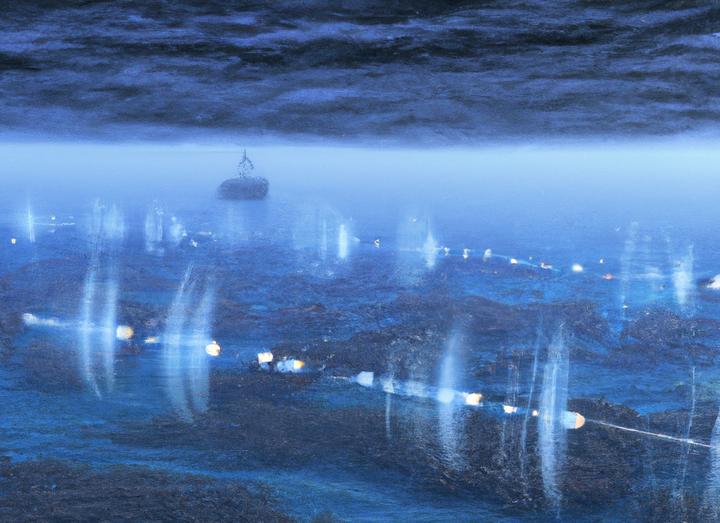In order to address the critical lack of data on the dynamics and physical evolution of the seafloor (coastal erosion, tectonic or volcanic motions, gravitational instabilities, etc.), we are exploring the potential of Distributed Fiber-Optic Sensing (DFOS) technology to complement or improve existing seafloor monitoring techniques.
DFOS is a revolutionary technique allowing to quantify deformation, temperature and/or acoustic signals typically every few meter of a standard optic fiber cable and over distances of several tenths of kilometers. The physical principle is not new but decades of improvements in the price and performance of the components make it a potential affordable alternative to standard seafloor instrumentation. Compared to traditional electro-mechanical sensors, optical fibers have many advantages: they are passive, lightweight, small, immune to electromagnetic interferences and tolerant to harsh environments (temperature and pressure). Data acquisition is done at the speed of light allowing any new application to become an operational system, and allowing the development of new early-warning systems. With DAS group at the Géoazur lab, we are especially focused on a particular DFOS technology call Distributed Acoustic Sensing (DAS).

Thanks to the telecom industry, the seafloors are already largely covered with fiber optic cables. The challenge here is to define the potential of these large infrastructures to provide meaningful geophysical signals measurements despite not being optimized for that.
Our first steps into the realm of seafloor fiber seismo-acoustic sensing, unveiling the potential of the approach to monitor earthquakes, swell, microseism…
- Sladen, A., Rivet, D., Ampuero, J. P., De Barros, L., Hello, Y., Calbris, G., & Lamare, P. (2019). Distributed sensing of earthquakes and ocean-solid Earth interactions on seafloor telecom cables. Nature communications, 10(1), 5777.
Earthquake detection and potential of the approach for early-warning:
Lior, I., Sladen, A., Rivet, D., Ampuero, J. P., Hello, Y., Becerril, C., … & Markou, C. (2021). On the detection capabilities of underwater distributed acoustic sensing. Journal of Geophysical Research: Solid Earth, 126(3), e2020JB020925.
Lior, I., Sladen, A., Mercerat, D., Ampuero, J. P., Rivet, D., & Sambolian, S. (2021). Strain to ground motion conversion of distributed acoustic sensing data for earthquake magnitude and stress drop determination. Solid Earth, 12(6), 1421-1442.
Lior, I., Rivet, D., Ampuero, J. P., Sladen, A., Barrientos, S., Sánchez-Olavarría, R., … & Bustamante Prado, J. A. (2023). Magnitude estimation and ground motion prediction to harness fiber optic distributed acoustic sensing for earthquake early warning. Scientific Reports, 13(1), 424.
Tsunami detection
We are also investigating how DAS can detect the subtle seafloor deformation caused by passing tsunamis, which could lead to new early-warning capabilities.
- Becerril, C., Sladen, A., Ampuero, J. P., Vidal-Moreno, P. J., Gonzalez-Herraez, M., Kutschera, F., … & Bouchette, F. (2024). Towards tsunami early-warning with Distributed Acoustic Sensing: Expected seafloor strains induced by tsunamis. Authorea Preprints.




